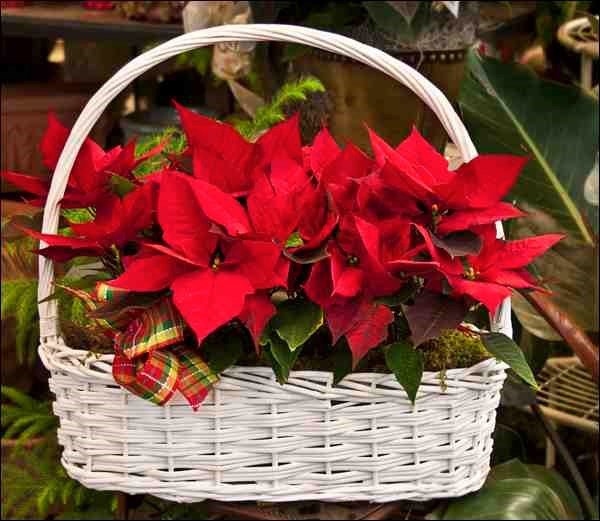There are many plants associated with the season that is upon us, many of them rooted (pardon the pun) in past. But they have become mere decorations so much so that their original meanings or origins have become forgotten or pushed to the side.
Bringing in evergreen boughs at this time of year has been practiced since at least Roman times. They were used to decorate homes during Saturnalia in celebration of Saturn, the god of agriculture. Because they were plants that "did not die," evergreens represented good health and fortune. As for using the whole evergreen tree instead of just branches, there are a number of legends describing the "first" Christmas tree, dating back as far as the seventh century. But it is more likely that the first Christmas tree was erected in 1521 in Alsace, France (then part of Germany). Martin Luther is credited with introducing lights to replicate his experience of seeing stars shining through the trees in the forest. He used wax candles, not a recommended practice today. Luckily, in 1882 electric Christmas lights were invented and today we have energy efficient strings of LEDs.
Evergreen wreaths have likewise been around for centuries. The circle itself symbolizes eternity and the evergreen branches signify immortality. Decorated with dried fruits, flowers and seeds, the wreath then represents the annual cycle of the seasons.
Rosemary at Christmas is now mostly used as a seasoning in turkey stuffing, at least in my house. But it used to feature more prominently during the season. Aside from a couple of legends involving the Mother Mary, it was commonly strewn on church floors and in the home. When walked on, it released a pleasant aroma and it was associated with friendship, fidelity and remembrance.
The poinsettia is a relatively recent entrant to the Christmas season. "Discovered" by Joel Poinsett during his time as U.S. ambassador to Mexico in the 1820s, poinsettia is now unarguably the second-most popular plant associated with Christmas. The legend on how it came to be so beautiful tells of a small, poor, Mexican girl who had nothing to give the baby Jesus. Her cousin told her it didn't matter what the gift was nor how small, as long it was given with love. So the little girl picked a bouquet of weeds by the roadside to offer to the baby Jesus at the nativity scene on Christmas Eve. The other children teased her, but then the weeds miraculously transformed into the bright red flowers we know today. From that night forward, they were known as "Flores de Noche Buena" or "Flowers of the Holy Night."
One myth to dispel: poinsettias are not deadly toxic. According to POISINDEX, a 50-pound child would have to consume at least 500 poinsettia leaves before beginning to approach a toxic dose. In a review of nearly 23,000 cases of poinsettia exposure, 96 per cent did not need treatment in a health facility. And not a single death has ever been documented. Some people may experience skin irritation from the sap and if consumed, leaves may cause stomach upset, vomiting or diarrhea.
Kwanzaa, while celebrated during the week between Christmas and New Year is not a religious observance. Instead it is celebration of African American culture and values, first celebrated in 1967. Two of the Kwanzaa symbols are plants. Mazao (fruits, nuts and vegetables) recalls historical harvest festivals or gatherings where joy, sharing, unity and thanksgiving were the true fruits of labour. Vibunzi (plural: muhindi) is a simple ear of corn, one ear for each child in the family. But it goes beyond a simply numbering of children - it is a recognition that it "takes a village to raise a child" involving the whole community as each one contributes their patience, love and understanding.
- This column is provided courtesy of the Saskatchewan Perennial Society (www.saskperennial.ca; [email protected]).




